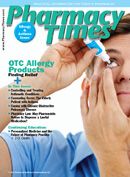Publication
Article
Pharmacy Times
Medication Safety: Preventing Errors with Concentrated Opioid Oral Solutions
Author(s):
Recommendations are presented here to prevent dispensing errors with concentrated opioid solutions, which can have devastating consequences.
Recommendations are presented here to prevent dispensing errors with concentrated opioid solutions, which can have devastating consequences.
In 2008, an 18-year-old man in Utah was prescribed oxycodone oral solution to treat throat pain associated with strep throat. According to news reports, he mistakenly received a 100-mg dose of concentrated oxycodone solution, however, instead of 5 mg as prescribed. The patient suffered organ failure, entered into a coma, and required mechanical ventilation. In the February 2004 issue of Pharmacy Times, similar errors involving concentrated morphine oral solution were reported. Although it is uncertain how this more recent error happened, there are a number of ways errors involving concentrated opioid oral solutions can occur.
Confusion between concentrated forms of oral liquid opioids and the conventional concentrations have contributed to errors. This confusion is made more likely when the concentrated products are stored near the conventional concentrations on pharmacy shelves. Also, some physicians prescribe oral liquid medications in milliliters instead of milligrams, which is particularly problematic when multiple concentrations exist. According to a 2003 FDA MedWatch alert, most reported overdoses involving morphine oral solutions occurred because volume (mL)— not dosage strength (mg)—was used to order, dispense, and label the product. For example, some patients received 5 mL of morphine 20 mg/mL (100 mg) instead of the prescribed 5 mg.
Safe Practice Recommendations
To reduce the number of errors with concentrated opioid oral solutions, consider the following:
• When appropriate, consider nonopioid medications and nonpharmacologic therapies for pain relief, especially for less severe pain.
• Reserve concentrated solutions for patients who require higher than usual doses due to severe chronic pain or are unable to swallow larger volumes of liquid.
• Always prescribe and dispense liquid medications with the dose specified in milligrams.
• Build alerts into computer order entry systems to warn about potential mixups between concentrations of opioid oral solutions.
• Consider adding the word “concentrated” immediately after the drug name to better differentiate concentrated products from other concentrations on computer screens.
• Use bar code scanning to verify product selection. When the concentrated formulation is scanned, a hard stop alert should require pharmacist documentation.
• Design receipts for concentrated formulations to print with a warning about the concentrated formulation. This should include scripted patient education to alert pharmacy personnel that pharmacist counseling is mandatory.
• Link the requirement to counsel with the cash register so that the transaction cannot be completed until the pharmacist provides counseling and documentation.
• Segregate the concentrated solution from the other concentrations. Add auxiliary labels to call attention to the concentrated solutions.
• Purchase and dispense concentrated solutions in dropper bottles to help prevent dose-measurement errors and to differentiate the concentrated solution from other nonconcentrated strength solutions.
• Include the dose in both milligrams and milliliters on pharmacy label directions.
• Never cover the concentration listed on the manufacturer’s label with a pharmacy label.
• Ensure an appropriate measuring device is provided.
• Counsel all patients (and/or caregivers) regarding the safe use of opioid oral solutions. To assess their understanding, have them repeat back this information and provide a return demonstration on how to measure the dose. Inform them of the potential for error when prescribing and dispensing these medications. Advise them to question changes in product appearance.
Educate staff about the potential for errors with opioid liquids and why such errors occur. Develop standardized guidelines to promote safe use of these products. â–
Dr. Gaunt is a medication safety analyst and the editor of ISMP Medication Safety Alert! Community/Ambulatory Care Edition.
Subscribe to Newsletter
Pharmacy Times and the Institute for Safe Medication Practices (ISMP) would like to make community pharmacy practitioners aware of a publication that is available. The ISMP Medication Safety Alert! Community/ Ambulatory Care Edition is a monthly compilation of medicationrelated incidents, error-prevention rec- ommendations, news, and editorial content designed to inform and alert community pharmacy practitioners to potentially hazardous situations that may affect patient safety. Individual subscription prices are $52 per year for 12 monthly issues. Discounts are available for organizations with multiple pharmacy sites. This newsletter is delivered electronically. For more information, send an e'mail message to community@ismp.org, or contact ISMP at 215-947-7797.










